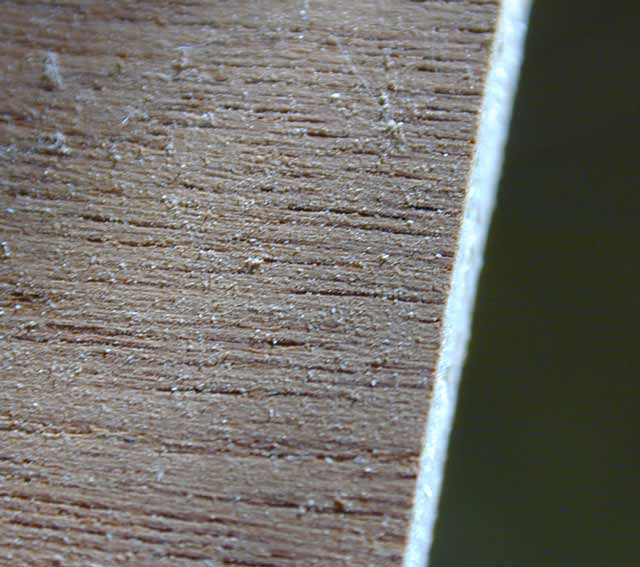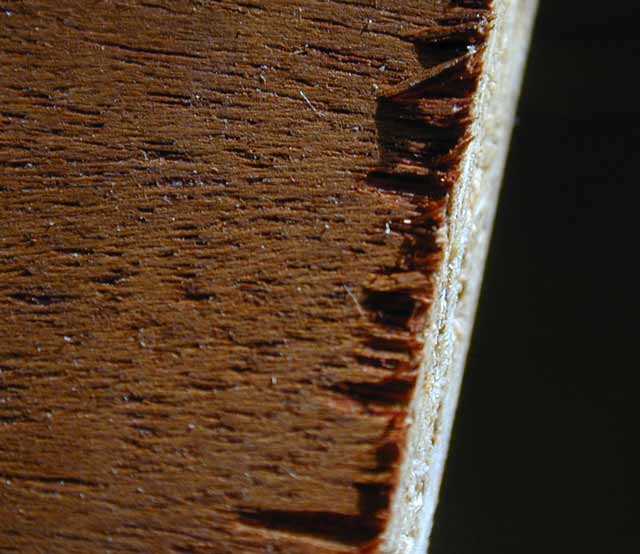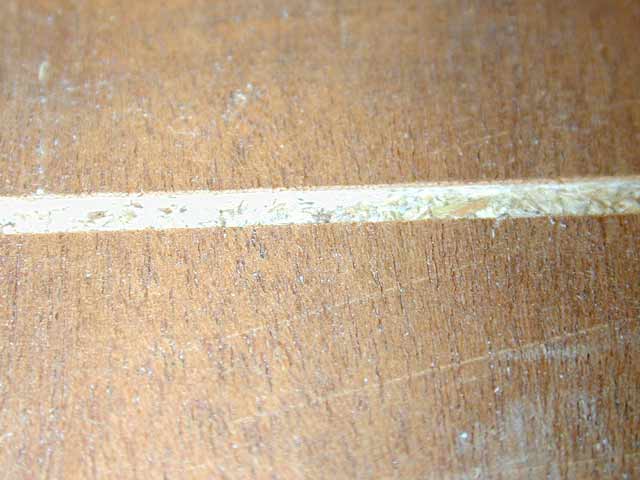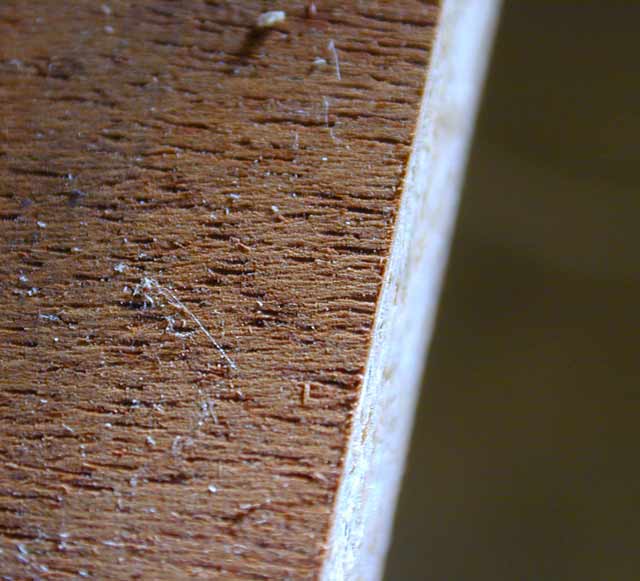Circular saw techniques
Tricks and tips to get the best results with power tools that use circular saw blades, including handheld circular saws, table and cabinet saws, and miter / chop saws etc.
Minimizing chipping
Circular saws make fast and relatively clean cuts, however they tend to cause some chipping on the side of the board adjacent to the saw where the teeth of the blade are pulling out of the surface, rather than being driven into it. This is most noticeable on laminate faced and veneered boards.
The "good" side of a typical cut in a double sided veneered furniture board:
However the surface on the exit side of the blade (i.e. against the saw body) is rather less pretty:
Now using a sawboard will also help. However the commonly suggested solution is to fit a fine toothed blade, and use a nice steady slow feed rate.
However there is a trick which will let you get good results even with a relatively coarse toothed "general purpose" TCT blade.
Clean Cuts
Start by setting the blade to make a very shallow cut - just a mm or even less. Make the first cut with this blade setting (against a straight edge if using a handheld saw so you can repeat the cut position exactly). You should get a nice clean grove through the surface like this:
There is little chipping because the blade exits the wood at such a shallow angle. Now set the blade to "normal" depth, and make the cut again, from the same side of the board. This time you should find the precut edge is still nice and clean:



